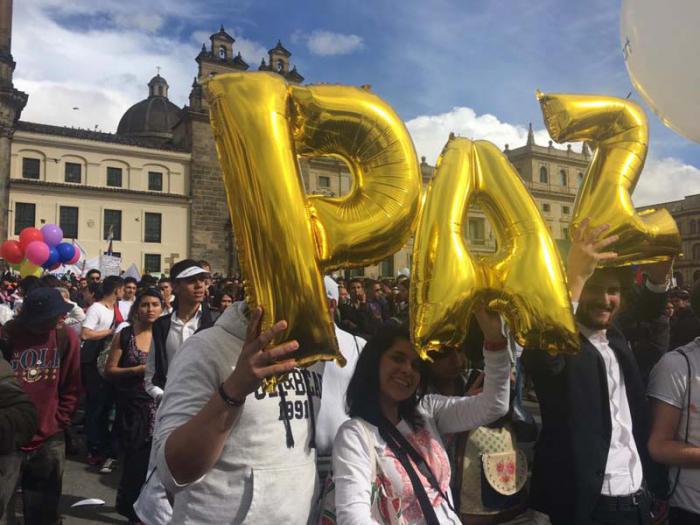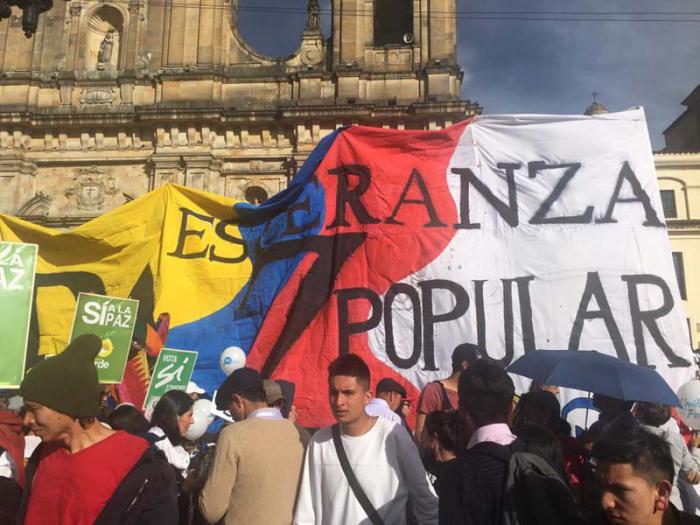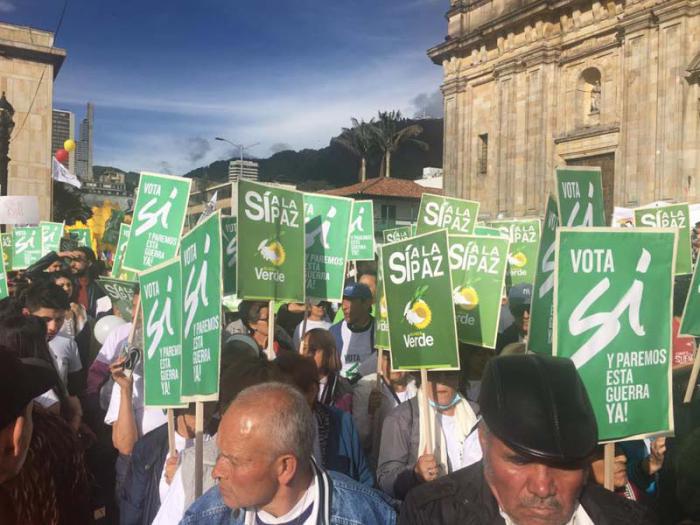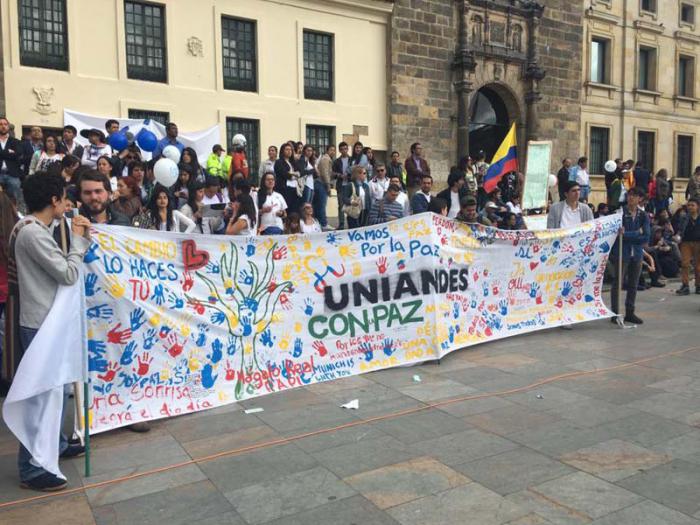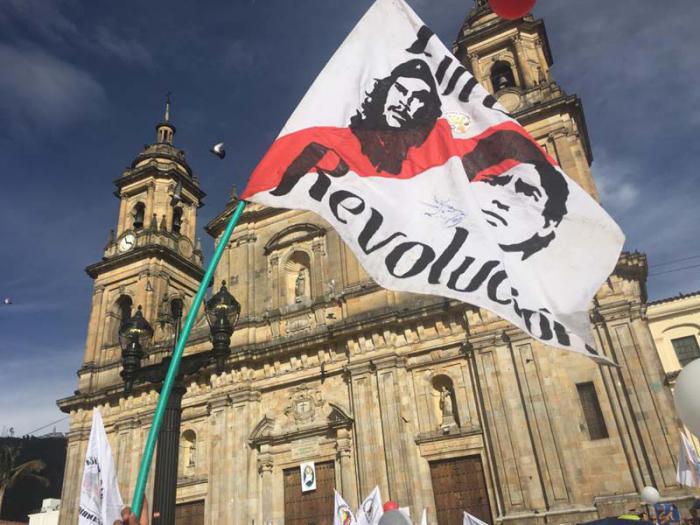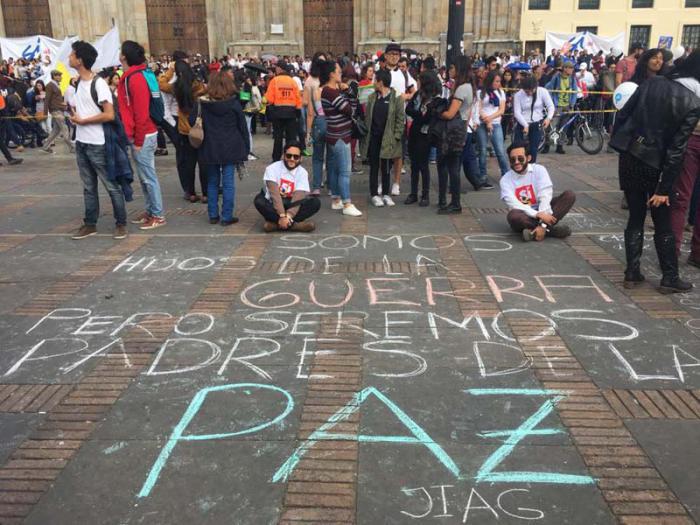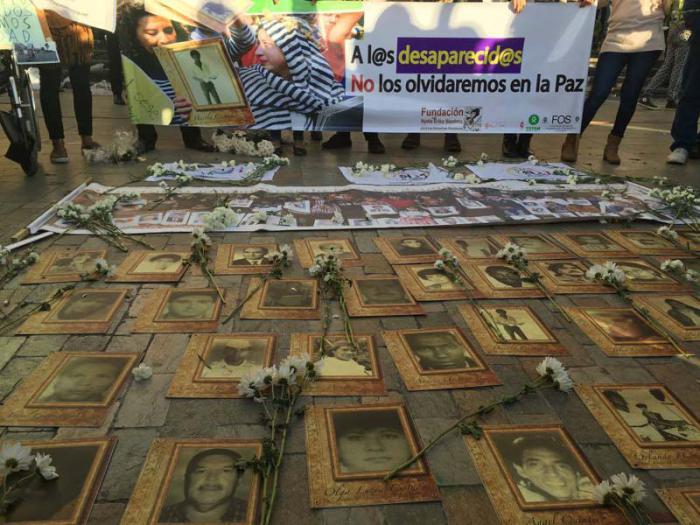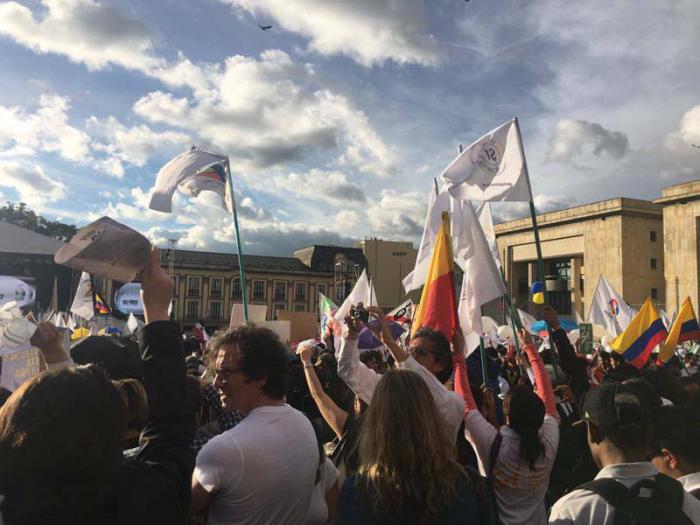The march starts early along 7th Avenue, which runs from the north of the city to the south, turning into a pedestrian walkway in the heart of Bogotá just before it reaches Plaza de Bolívar.
This is not just any morning. The papers hanging in the corner newsstands all have the same front page. El Tiempo reads “Peace” in capital letters, with no photos or anything that could detract attention from the most important event for Colombia in the last 50 years.
On Sunday, September 25, 7th Avenue was a medieval carnival, with street vendors and Michael Jackson and Carlos Vivies impersonators. However, just one day later and it looks like a battlefield. There are slightly more “Sí” (Yes) posters supporting the plebiscite, scheduled for October 2, on the lamp posts and exterior walls of businesses, although flyers for the “No” campaign are also being passed around.
At midday, the yes supporters called on by students, social organizations and a few political parties, arrive. They march down to Plaza de Bolívar to the rhythm of cumbia, dressed in white shirts and holding placards reading “Vote yes, let’s stop this war now.”
In front of Bogota City Hall and across from the Congress building and Palace of Justice, a stage with giant screens linking up to Cartagena was erected.
City residents don’t want to miss the moment when President Juan Manuel Santos and Timoleón Jiménez, leader of the largest guerilla faction in Colombia, seal the historic Havana Peace Agreements.
Hundreds of stories are written in crayon and chalk on the black paving stones of the plaza. Two youths pose next to one of these which reads: “We are the children of war, but will be the parents of peace.”
The music of peace erupts from drums and Brazilian rhythms mixed with cumbia and vallenato. The public starts to dance. And the Yes movement turns into a celebration.
The broadcast begins as the eyes of 13,000 people watch the events unfolding over one thousand kilometers away, on the Caribbean coast. When the special guests are introduced, and the turn of Army General Raúl Castro arrives, the plaza responds with applause.
There is more than one single-star flag waving alongside the white ones of peace and Colombia’s three-color ensign. Gratitude for the role played by Cuba as guarantor nation and the almost fours years which Havana served as host of the talks between the government of Juan Manuel Santos and the Revolutionary Armed Forces of Colombia-People’s Army (FARC-EP), is palpable.
“This is my father’s wish and the desire of a people who have come together right now to witness a dream,” states 31 year old Andrea Medina, her face wet with tears of joy.
Fifty-two year old Nairo Jaime is accompanied by his 10 and 12 year old sons. “The road of war leads to nowhere, reconciliation is better,” states the journalist who covered the Caguán talks under President Andrés Pastrana.
”The country is here for my sons, so that they fulfill their dreams,” he states.
When Santos and Timoleón shake hands following the signing of the agreements, which put an end to half a century of conflict, the plaza erupts. Someone has managed to get past the security checks with fireworks, one of which explodes twice above the public buildings. The frightened pigeons take flight trying to avoid hundreds of white balloons.
Bogotá residents begin to sing “Yes, we did it; yes, we did,” in unison; as if deep down, even in this moment, many are uncertain of what has just happened. “The war is over, sweetheart,” a mother explains to her daughter.


